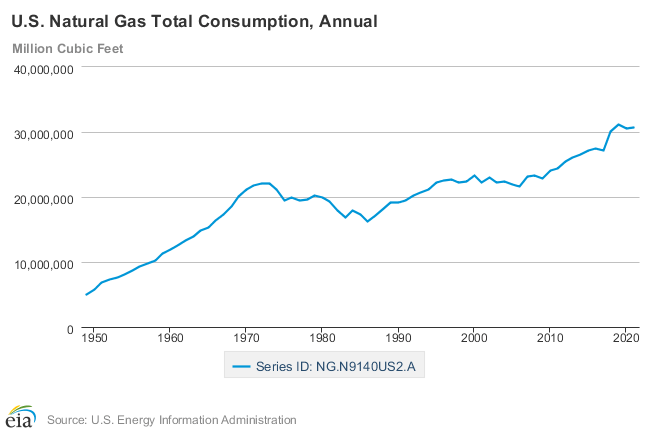Natural Gas Ban in San Diego
Owner's Nightmare or Welfare to Society?
In the latest vote to update San Diego’s Climate Action Plan, the city council voted unanimously to ban the use of natural gas in new homes and businesses. The plan includes prohibiting the use of gas range cookers and gas heaters in construction of new buildings, as well as retrofitting existing homes and businesses.
The primary goal for the Climate Action Plan is to reduce carbon footprint and reach net-zero emissions by 2035. This is in line with other initiatives such as the Regional Decarbonization Framework, which sets initiatives to plant more trees and commitment to fully provide electricity from carbon-free sources in the region of San Diego.
Critics of the plan fear the costs over electrifying all homes and businesses would be too idealistic due to the lack of renewable energy generators that can power San Diego. They believe that the pipeline networks are ‘crucial’ for a carbon-free network, and that the focus should be to ‘decarbonize’ gas to become renewable. Todd Gloria, mayor of San Diego, spoke to a public hearing after the vote, stating that “…the financial cost and human consequences of inaction are almost unimaginable.”
This is not a new precedent for Californian cities, as similar bans occurred in Berkeley and San Francisco in recent years. What is new, is the valuable information gathered from case studies on cities that banned natural gas, including the total costs of retrofitting and expenses, the enforcement of these policies by the local government, the health benefits over electrification, and the actual effectiveness in decarbonization from this ban.
Natural Gas Consumption of the Average American
Before analyzing the results from these case studies, it is important to know the significance natural gas has on the average person. Natural gas serves as a convenient solution to one basic human need: heating. Coal and petroleum was, and still is in developing countries, the cheapest option for central heating, but came with worse air quality and environmental impact towards its surroundings. The widespread use of natural gas for central heating was a recent phenomenon, growing up to 400% in production since 1950. This phenomenon came from replacing coal as the primary heating utility and electricity generation, due to better availability, lower production costs, and ease of transportation and storage from improvements in gas-using technologies developed in the late 20th century.

Case Studies on the Impact of Natural Gas
Yet despite the convenience of natural gas, its environmental impact and increasing costs are making the resource less and less desirable. The vast usage of natural gas is a main contributor to climate change due to the methane and carbon dioxide leakage into the atmosphere.
In addition, natural gas is a global commodity correlated with oil prices, and market shockwaves have occurred historically. According to Katherine Blunt’s ‘Californa Burning: The Fall of Pacific Gas and Oil,’ the largest oil-producing countries in the Middle East halted exports and production in protest for US intervention in the Arab-Israeli War. This more than doubled the price per barrel and created a global natural gas shortage. Even slowdowns in gas production from weather conditions causing supply issues can make power more expensive to produce. These price spikes reduce the reliability of natural gas as a heating component and electricity generator, where even whole cities can face brownouts from not being able to afford the resource, not to mention the increase in electricity bills for the owners.
Natural gas is also a main contributor to many forms of pollution, most commonly air pollution and water contamination. These cause many health hazards for society, including increase in risks of asthma, cardiovascular disease, diabetes, leukemia, and lymphoma. The pollution also induces community disruption, as poorer regions are more exposed to the pollutants due to cheaper land value for the power plants.
The transition from natural gas to electric only would be just as costly as the transition was from coal, if not more. However, new homes built with electric heaters and stoves in mind are cheaper due to not requiring the gas pipeline infrastructure needed to install in the building projects. In addition, there are less chances of fire hazards from gas leaks and faulty gas infrastructure, which means less potential buildings on fire, less of a strain on fire department’s resources, and less renovation costs to homeowners from a potential fire.
Along with the Costs, Come Some Benefits
Despite the costs of retrofitting and fresh expenditures, there are major economic benefits from the electrification of homes and decrease in natural gas consumption. With less pollution caused by natural gas production and consumption, the health hazard risks decrease, which leads to a more productive society and less strain on the medical system. In addition, the businesses specialized in electrification of buildings will produce more jobs as demand will hike after a natural gas ban.
Natural gas bans will likely be the dominant headline for major cities that are planning to vote on the issue. Its perceived effectiveness on dealing with climate change and leaving responsibilities on the owners to modernize their buildings makes the bill attractive to legislators that need a quick and cost-effective solution to this global problem. It should be noted that only banning natural gas as a solution will create a paradoxical outcome in which the consumption of natural gas is actually increased. This is due to the fact that less than half of the energy contained in gas is converted into electricity, thus more reliance on electricity means that the electrical production must be renewable as well. This may not be a problem for California as they are committed to having pure carbon-free sources of electricity, but other cities or states that plan on fighting climate change must consider this concern.
The Impact on US Natural Gas Industry
These bans, however, are the biggest threat to one of the largest industries in the United States; the gas industry. The natural gas bans effectively halts companies from providing heating utility to homes and businesses, harming their revenue sources in these cities and forcing service companies based on assembling gas pipe infrastructure to shut down in the region.
The gas industry is aware of the shifting tides against them, and arranged methods to prevent these bans and other measures from taking place. One of these methods is lobbying state governments to enact ‘preemption laws,’ with most of these laws resembling Georgia’s House Bill 150 that “prohibit governmental entities from adopting any policy that prohibits the connection or reconnection of any utility service based upon the type or source of energy or fuel.” As of February 2022, more than 20 states have adopted these laws, effectively limiting local governments from having control over their own utilities. In a sense, this means state governments have chosen to represent the interests of the gas industry, rather than letting city councils vote on what is best for them.
How This May Affect You
In order for residents and business owners to prepare for the possibility of natural gas bans, it is necessary to search up their local government’s upcoming legislations and votes. This is easily visible through government websites that provide searches for legislations of any kind, including natural gas bans and government’s roles on utilities.
If there is provincial momentum brewing for fighting climate change, and/or the city government is planning or currently voting on the issue of natural gas, now is more than ever the best time to plan out retrofitting one’s owned buildings and its projected costs. These costs are based on how energy-dependent the home or business is, both in how old and intricate the pipeline system is, and expenses from energy consumption.
join the newsletter
Thanks for joining us!
Please try again later.
Recent Posts

















